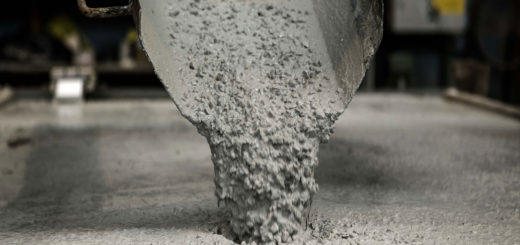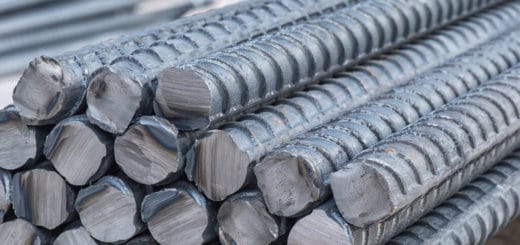Elastic Modulus of Steel
by Prasad ·
Steel is a ubiquitous material in modern society, renowned for its strength, durability, and versatility. One of the most important properties used to define the mechanical behavior of steel is the steel elastic modulus. In this article, we are discussing the intricacies of the elastic modulus of steel, its significance and methods of calculating the modulus.
The elastic modulus, often referred to as Young’s modulus, is a material property that describes its stiffness or resistance to deformation under an applied load. It quantifies the relationship between stress and strain in a material within its elastic limit.
The elastic modulus of steel is one of the dominant factors influence in determining its structural integrity and performance under load. It reflects the material’s ability to withstand stress without undergoing permanent deformation. Understanding and controlling this property are paramount in engineering designs to ensure safety and reliability.
What is Steel
Steel is an alloy primarily composed of iron and carbon. Additional elements such as manganese, chromium, nickel, and others, will be added depending on the desired properties.
Its exceptional mechanical properties make it indispensable in construction, manufacturing, automotive, and numerous other sectors.
Factors Affecting Elastic Modulus of Steel
Composition
The composition of steel is a primary determinant of its elastic modulus. Steel is an alloy composed primarily of iron and carbon, but the addition of various alloying elements can significantly influence its mechanical properties, including elasticity.
Higher carbon content generally results in increased hardness and strength, which can affect the elastic modulus. However, it’s essential to strike a balance between carbon content and other alloying elements to prevent brittleness, as excessive carbon can lead to a reduction in ductility.
Heat Treatment
Heat treatment processes play a crucial role in modifying the microstructure of steel, thereby affecting its mechanical properties, including elastic modulus. Quenching and tempering, for example, can alter the arrangement of atoms within the material, resulting in changes in its elasticity.
During quenching, steel is rapidly cooled from high temperatures, leading to the formation of a hardened structure. Subsequent tempering, which involves reheating the steel to a lower temperature, helps relieve internal stresses and improve toughness. The choice of heat treatment parameters, such as temperature and duration, can be tailored to achieve specific elastic modulus requirements. This is process we used in making rebar as well.
Alloying Elements
The addition of alloying elements such as chromium, nickel, manganese, and molybdenum can impart unique properties to steel, including changes in elastic modulus.
For example, chromium improves corrosion resistance, while nickel enhances toughness and ductility.
Each alloying element interacts differently with the iron-carbon matrix, influencing its crystal structure and mechanical behavior. By carefully selecting and controlling the concentration of alloying elements, engineers can tailor the elastic modulus of steel to meet the demands of specific applications, whether it’s for high-stress environments or enhanced formability.
Elastic Modulus of Common Types of Steel
| Steel Type | Elastic Modulus (GPa) |
|---|---|
| Carbon Steel | 190-210 |
| Stainless Steel | 190-210 |
| Alloy Steel | 200-220 |
Different types of steel exhibit varying elastic moduli due to differences in composition and processing. For instance, stainless steel, known for its corrosion resistance, may have a different elastic modulus compared to carbon steel.
How to Calculate Elastic Modulus?
The elastic modulus, also known as Young’s modulus, quantifies the stiffness of a material and its ability to deform under stress. It is defined as the ratio of stress to strain within the material’s elastic range. Here’s how to calculate it:
Tensile Testing
Tensile testing is the most common method used to determine the elastic modulus of steel.
In this test, a specimen of known dimensions is subjected to axial tension until it fractures. During the test, the stress applied to the specimen is measured relative to the applied force, while the resulting strain is determined by measuring the deformation of the specimen.
Stress-Strain Curve
The relationship between stress and strain in the material is graphically represented by a stress-strain curve. In the elastic region of the curve, stress is directly proportional to strain, according to Hooke’s Law. The slope of this linear portion corresponds to the elastic modulus of the material.
Young’s Modulus Formula
Young’s modulus (E) can be calculated using the formula:
E = ϵ σ
where:
- E is the elastic modulus (in pascals, Pa or gigapascals, GPa),
- σ is the applied stress (in pascals, Pa), and
- ϵ is the resulting strain (unitless).
By measuring the stress and strain experienced by the steel specimen during tensile testing, engineers can accurately determine its elastic modulus, providing valuable insights into its mechanical behavior and suitability for various applications.
Expanding on these sections provides a more comprehensive understanding of the factors influencing the elastic modulus of steel and the methods used to calculate it.
The elastic modulus of steel plays a pivotal role in determining its mechanical behavior and suitability for diverse applications. Understanding the factors influencing this property enables engineers to optimize designs for efficiency, safety, and sustainability, driving innovation and progress in various industries.
FAQs
- What is the elastic modulus of steel?The elastic modulus, also known as Young’s modulus, typically ranges from 190 to 210 GPa, depending on the grade and composition.
- How does temperature affect the elastic modulus?Temperature can influence the elastic modulus, with higher temperatures generally leading to reduced stiffness due to thermal expansion effects.
- What are some common methods for measuring the elastic modulus?Tensile testing and ultrasonic techniques are commonly used methods for determining the elastic modulus of steel.
- Can the modulus of steel be customized for specific applications?Yes, through alloying and heat treatment processes, the elastic modulus can be tailored to meet the requirements of various applications.
- What are the implications of a higher elastic modulus?A higher elastic modulus signifies increased stiffness and rigidity, making steel suitable for load-bearing structures and components requiring precise dimensional stability.



